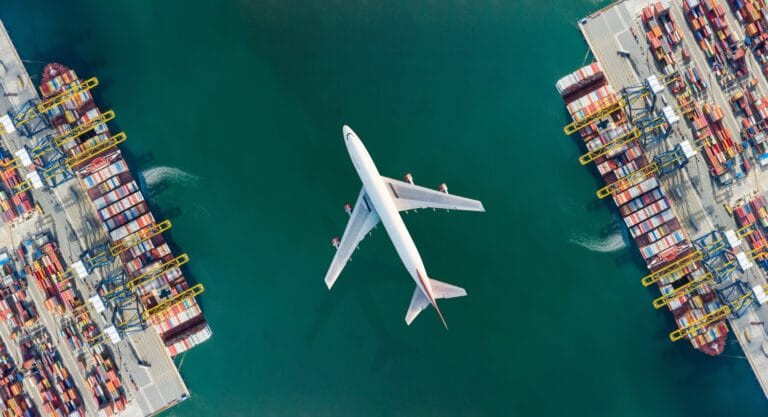It’s 2 am in Bogotá’s El Dorado Airport, a Boeing 767 freighter taxis toward the cargo apron, its hold packed with 40 tonnes of roses bound for Miami’s Valentine’s Day rush. Three gates over, crews prep medical devices for São Paulo and an express jet readies electronics destined for Dallas. The choreography repeats itself nightly across Latin America’s busiest hubs, but the tempo is accelerating.
Nearshoring trends, shifting tariff regimes, and an e-commerce boom are rewriting the rules of hemispheric trade. The question now is, can Latin America deliver on its promise, not just in volume, but in efficiency, and resilience?
Big picture
Latin America has become a key player in a global supply chain reset. US–China tensions and rising Asian transport risks are pushing manufacturers closer to home. Mexico, Central America, and Colombia lead this nearshoring wave. In 2023, Mexico surpassed China as the US’s largest trading partner, a watershed moment. High-value goods such as electronics, auto parts, and medical devices now increasingly route through Latin America rather than crossing the Pacific.
Colombia’s outbound cargo grew by 6 percent year-over-year in early 2024, while inbound jumped 22 percent, outpacing Brazil’s outbound growth. Overall, Latin American carriers posted some of 2024’s strongest gains, with international cargo demand rising over 12 percent.
That said, nearshoring has its caveats. Many airports lack capacity for sudden surges. Regulatory frameworks remain protectionist or opaque in certain markets. The test isn’t just capturing new flows, it’s processing them intelligently and at scale.
Mexico: The epicentre
Mexico has become nearshoring’s poster child. Proximity to the US, USMCA status, and manufacturing clusters in Monterrey, Querétaro, and Guadalajara make it a natural magnet. Industrial production is pulling increasing airfreight volume, especially in electronics, aerospace, and auto parts.
The cargo shift from Mexico City International to Felipe Ángeles Airport (AIFA) disrupted logistics patterns short-term, but promised long-term capacity relief and decentralisation. Mexico went from supply chain alternative to supply chain imperative in under three years.
Brazil: Industrial anchor
Brazil remains Latin America’s freight powerhouse. Its vast industrial base and domestic distances make air cargo strategically vital. São Paulo’s Guarulhos and Viracopos anchor Brazilian throughput, with Azul Cargo, LATAM Cargo, and GolLog operating extensive regional networks.
The country is fast-becoming a logistics test bed: cold-chain warehousing, automated sorting, and digital workflows are advancing in São Paulo and Campinas. But challenges persist: bureaucracy, high fuel taxes, and inefficiencies erode competitiveness. For many, the speed premium doesn’t always justify the cost.
Colombia: A regional connector
Bogotá’s El Dorado ranks among Latin America’s most consistent freight leaders. Avianca Cargo has invested in freighter modernisation and pharma/perishables specialisation. Colombia’s free-trade zones and efficient customs make it a go-to for regional reach. While flowers and perishables remain export mainstays, Colombia has also been handling more electronics, components, and e-commerce fulfillment. Its geographic centrality gives it an edge for northbound US flows and lateral Latin connections.
Southern cone: Efficiency amid volatility
Chile leads the Southern Cone in logistics sophistication, with Santiago’s cold-chain infrastructure supporting salmon, fruit, and wine exports. LATAM Cargo dominates southern routes, recently adding freighter frequencies between Brazil and Europe. Peru’s seafood and pharma exports are gaining strength, while Argentina remains a major agricultural supplier despite economic strain.
Central America and the Caribbean: Strategic crossroads
Panama’s Tocumen International punches above its weight, linking South America, Central America, and the Caribbean. The Colon Free Zone feeds US and European supply chains, while Copa Cargo expands regional reach. Puerto Rico has become a pharma and medical device hub, with US territory status providing regulatory advantages and direct market access, a competitive edge in high-value cargo.
The green challenge
As Latin American freight volumes climb, the carbon riddle remains unsolved. Sustainable aviation fuel (SAF) adoption remains nascent across the region, and few airports have implemented carbon-offset programmes at scale. Mexico and Brazil are discussing greener standards, but implementation lags. If global supply chains mandate green compliance, Latin carriers without SAF infrastructure or carbon tracking could face a competitive disadvantage. The region that integrates sustainability early will gain market access and competitive edge.
Northern influence: Partners and gatekeepers
The US remains Latin America’s dominant air trade partner. Miami International handles the lion’s share of Latin American-US cargo; Dallas/Fort Worth, Los Angeles, and New York serve as strategic gateways. Integrators funnel nearshoring volumes into U.S. supply chains through these corridors. Canada is increasingly active, with Air Canada Cargo expanding routes in the region and posting ten percent year-over-year (YoY) cargo revenue growth.
But North American gatekeeping cuts both ways. US customs modernisation forces Latin carriers to meet higher digital compliance standards. Shifting green mandates or tariff policies could raise costs. Under USMCA, supply-chain integration deepens, but so does exposure to policy shifts like carbon rules or new trade restrictions.
Connecting opportunity through smart infrastructure
Latin America’s airfreight industry is entering a key phase. Nearshoring and digitalisation are pushing capacity and demand upward. Success depends on scaling infrastructure, smoothing out policy, and navigating external dependencies, particularly North American regulatory and environmental standards.
From the flower fields of Bogotá to the manufacturing corridors outside Monterrey, the infrastructure is already humming. The question isn’t whether Latin America can compete, it’s whether the region will seize this moment to lead.




